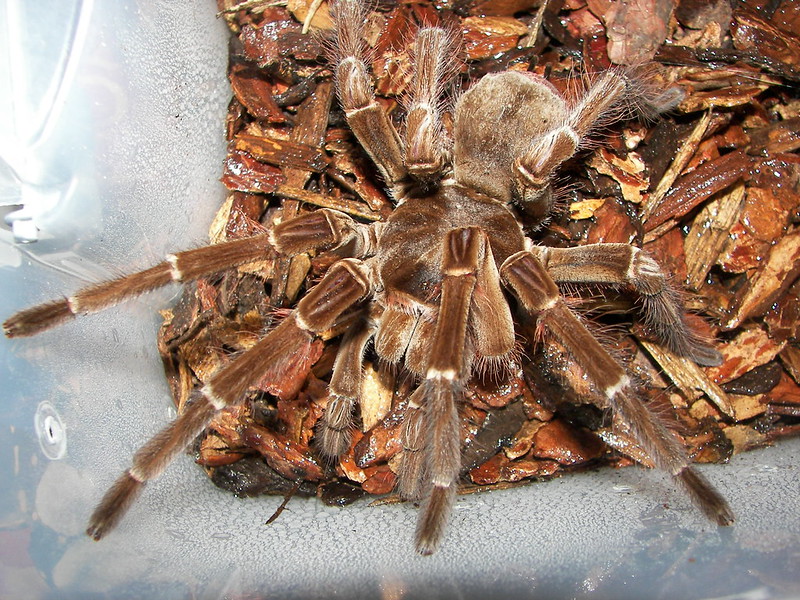Goliath Birdeater Facts
- Most notably, the Goliath Birdeater is a species of tarantula that ranks as the largest of all known spiders. In fact, in terms of weight, the creature also remains the largest known type of arachnid.
- The common name for the species, rather obviously, derives from its enormous size. Because of that, it has the ability to prey on birds. However, in actuality, preying upon birds occurs quite rarely.
- Like many related species, it also displays sexual dimorphism. However, it separates itself from other spiders here, as well. That is due to the fact that its sexual dimorphism appears in terms of lifespan.
- While physically similar, the females generally live far longer than do males. Females live an average of 15 – 25 years, but males rarely live for more than 3 – 6 years. Finally, the reason for this remains unclear.
Related Articles
Goliath Birdeater Physical Description
Firstly, it must be pointed put just how gigantic the aptly-named Goliath Birdeater actually grows. That’s because mature individuals of this king-sized invertebrate attains a legspan of as much as 12 in (30 cm).
Furthermore, some hefty individuals of this amazing creature weigh as much as 6.2 oz (175 g). This far outstrips any other related species. Another species equals it in legspan, but has far less mass.
Not to be ignored, its fangs also grow to a proportionately huge length. That’s because these often reach a length of an inch long.
Also worthy of noting is its eyesight. Even though it has eight eyes, its vision remains rather poor. Finally, its coloring generally consists of various shades of brown.
- Kingdom: Animalia
- Phylum: Arthropoda
- Class: Arachnida
- Order: Araneae
- Family: Theraphosidae
- Genus: Theraphosa
- Species: T. blondi
Goliath Birdeater Distribution, Habitat, and Ecology
First of all, the incredible Goliath Birdeater seems perfectly adapted to its habitat. That’s because it consists of the rainforest regions of portions of South America. This includes the countries of Guyana, Suriname, Argentina, and also portions of Brazil and Venezuela.
Further, it evolved as a terrestrial spider and usually resides in deep burrows, swamps, and marshes. In addition, like most larger spiders, it does not spin a web, but remains completely mobile.
The Goliath Birdeater is a nocturnal arachnid and principally feeds as an ambush predator. It is also an opportunistic hunter and lays a silk path which acts like a tripwire for animals that pass through. Though it primarily feeds on earthworms, insects are also occasionally taken.
Finally, despite its truly massive size, it poses virtually no serious threat to humans. The effects of its venom compares with that of the sting of a bee or wasp. But, it does release special hairs from its legs, which can be a severe irritant.
Species Sharing Its Range
Check out our other articles on 5 Completely Unique Volcanoes, Signature Spider, San Diego Ragweed, Mary River Turtle, Bluebottle Ant, Wood Frog, Golden Tabby Tiger, Weedy Seadragon

